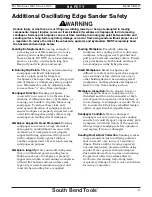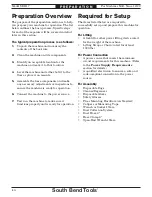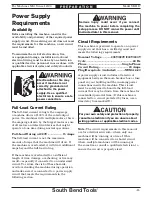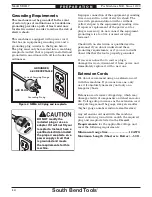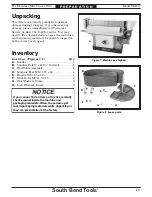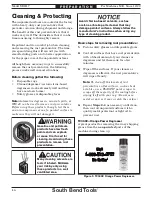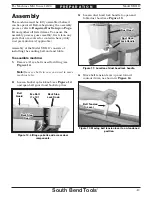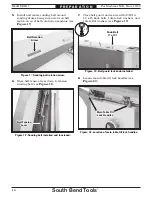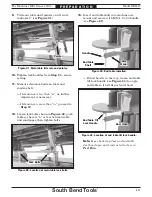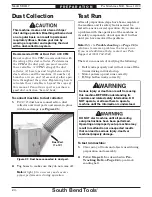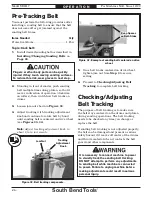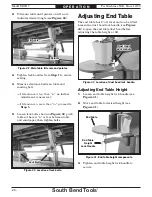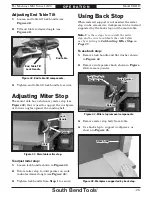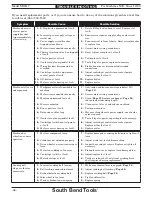
For Machines Mfd. Since 12/20
Model SB1117
-23-
O P E R A T I O N
Stock Inspection &
Requirements
Some workpieces are not safe to sand or may
require modification before they are safe to sand.
Before sanding, inspect all workpieces for the
following:
•
Material Type:
This machine is intended
for sanding natural and man-made wood
products. This machine is NOT designed
to sand metal, glass, stone, tile, plastics,
drywall, cement backer board, laminate
products, etc.
Sanding improper materials increases risk of
respiratory harm to operator and bystanders
due to especially fine dust inherently created
by all types of sanding operations
—
even if
a dust collector is used. Additionally, life of
machine and sanding belts will be greatly
reduced (or immediately damaged) from
sanding improper materials or from exposure
to fine dust created when doing so.
•
Foreign Objects:
Nails, staples, dirt, rocks
and other foreign objects are often embedded
in wood. While sanding, these objects can
become dislodged and tear sanding belt
Always visually inspect your workpiece for
these items. If they cannot be removed, DO
NOT sand the workpiece.
•
Wet or "Green" Stock:
Sanding wood
with a moisture content over 20% causes
unnecessary clogging and wear on the
sanding belt, increases the risk of kickback,
and yields poor results.
Sanding Tips
• Avoid sanding a workpiece more than is
necessary, since doing so will unnecessarily
decrease belt life and cost you more money
over time.
• Extend the life of sanding belts by regularly
using a PRO-STIK
®
abrasive surface cleaner
(see Accessories on Page
32).
• As a rule-of-thumb, sand with progressively
higher grit numbers in increments of 50 or
less.
• Replace sandpaper with a higher grit to
achieve a finer finish (refer to Installing/
Changing Sanding Belts on Page 24).
• Hold the workpiece securely with both
hands. Use the tables/miter stop/back stop
whenever possible to support workpieces. Do
not force the workpiece against the belt.
• When sanding workpieces with a bow or
crown, place the high point up on the table
to prevent the workpiece from rocking, then
take very light passes.
• Use the full width of the sanding belt by
adjusting the table height or workpiece
position so sanding is not always done in just
one area.
• Make sure belt guard is closed and secured
during operation.
• Belts clog and wear. Change belts whenever
you notice a difference in sanding quality/
performance.
Moving belt can cause serious personal injury
if it comes in contact with fingers, hands, or
other body parts. Always support workpiece
against table or miter stop when sanding.
Use extreme care to provide a safe distance
between belt and any body part.
Содержание SB1117
Страница 48: ...southbendtools com Printed In Taiwan CS21567...

